
-
Specs
- Light and compact audio recorder
- 32-Bit Float recording for full dynamic range and clip free recording
- No gain adjustment necessary
- Records 44.1kHz/32-bit float or 48kHz/32-bit float audio files
- Rec Hold function to avoid accidental operation of buttons
- 1/8" Mic In mini phone jack with Plug-in power (2.5V)
- Stereo ⅛" Phone/Line Output jack with dedicated volume control
- 80 Hz low cut filter
- High precision internal clock (±0.5ppm) to avoid audio and video syncing issues
- Wireless timecode synchronization (F2-BT model only)*
- Records directly to micro SD and SDHC cards up to 512 GB
- USB-C for connection to F2 Editor for settings
- Built-in Bluetooth for connection to the F2 Control app for settings adjustment and remote transport control (F2-BT model only)
- Runs on only 2 standard AAA alkaline, Lithium, or NiMH rechargeable batteries, or AC adapter (AD-17)
- Up to 15 hours of operation (14 hours on the F2-BT) with two AAA alkaline batteries
- $149 without Bluetooth
- $199 with Bluetooth
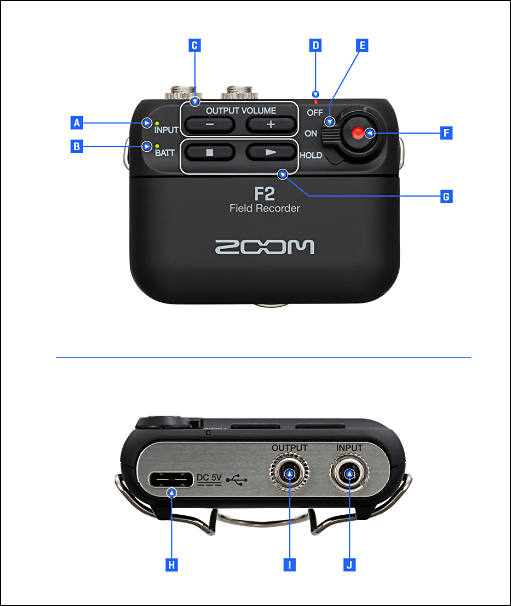
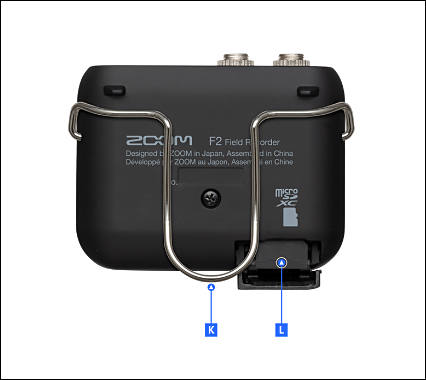
-
How this "no gain adjustment necessary works"? Clipped sound are really recoverable?
-
I called Zoom and inquired about phantom power. It doesn't have it. No sale.
-
You mean plug-in power? As it clearly has it, looking at connected mikes.
1/8" Mic In mini phone jack with Plug-in power (2.5V)
This is from specs.
Such recorders never have 48V phantom power.
-
How this "no gain adjustment necessary works"? Clipped sound are really recoverable?
Yes, as microphones are only able to produce up to certain voltage levels (quite small), clipped sounds just don't happen.
Issue with clipping happened as ADC had very limited range, here they have two shifted level good ADCs that are mixed by processor to make 32bit floating file.
-
I understand 32bit float, but still... No level meter like tascam DR10L, in fact, there are no display to show meters in future firmware upgrade. Need BT version and additional smartphone device. On a production, I can see how time consuming that will be. In the same way, no way to check battery level, or remaining/elapsed recording time, setting recording format, setting time and date, enabling low-cut, selecting battery type, formatting memory card, select power saving time.. except with BT version and additional smartphone.
hard pass
-
The way this things are used - you don't need all you mentioned.
Its is made mostly for one man team interviews. And here output that is absent in DR10L is better.
Also in DR10L it is very easy to forget to start recording, here it is MUCH harder.
no way to check battery level,
Actually it has led for this.
or remaining/elapsed recording time, setting recording format, setting time and date, enabling low-cut, selecting battery type, formatting memory card, select power saving time.. except with BT version and additional smartphone.
First is not required at all. Lack of lot recording options is also big plus, at worse you will get wrong frequency that is no problem at all.
Normally for DR10L and here you will set all options via config file on card (hope it support it).
But Bluetooth is also nice as making auto sync real option.
-
Looks very close to this:
-
I think Zoom had been developed before this thing, as it is only COVID that delayed public release.
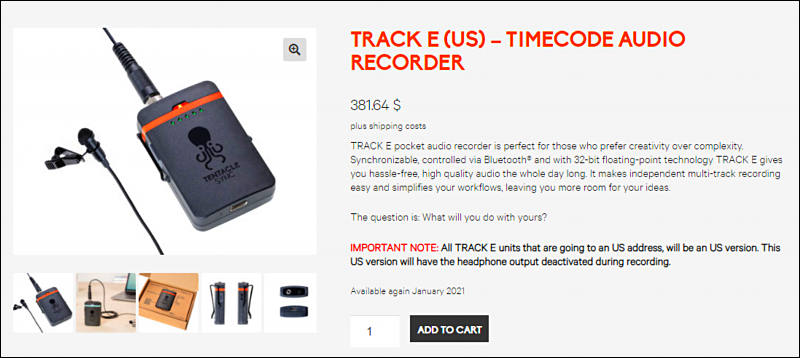
Note that Track E is much more expensive and it lacks option to just put new batteries (that I'll always prefer on set on on exhibition). With USB connector any dirt or issue will ruin your day.

 sa15686.jpg800 x 358 - 53K
sa15686.jpg800 x 358 - 53K -
32 bit is a good idea, although not really necessary. As an oversimplification, if you record low enough, at a high enough bit rate, you don't need any levels and you won't clip and it can all be automated. It's a step forward as far as convenience and on-site stress.
If you want phantom power get the bigger recorder. 12 volts would be very, very handy for Schoeps mics, but of course that's not the mass market, even if there are a lot of Schoeps mics out there and on many sets. -
32 bit is a good idea, although not really necessary. As an oversimplification, if you record low enough, at a high enough bit rate, you don't need any levels and you won't clip and it can all be automated.
Well, no.
32bit here comes from two new level shifted parallel ADCs (with good preamps they made and each around 23 real bit depth).
If you try do such thing with average lav recorder you'll face single 19-20bit ADC (real bits!), usually with not so good preamp that will also eat stuff due to noise floor. So, if you go low - and something happens, like bad mike placement or some scary person, you can have issue where quality of one channel will really differ after you try to fix levels.
DR-10L is something in between - it spends your time due to multiple files and level shift is not very big (ala 10db). So, from time to time you'll be fixing clipping. From usability it is quite horrible recorder (it is quite easy to mess things up, even forget to start recording is easy!), that has average preamps and some high pitched noise (on each of 10 recorders I saw and edited audio from) + some small radio interference.
12 volts would be very, very handy for Schoeps mics, but of course that's not the mass market, even if there are a lot of Schoeps mics out there and on many sets.
get DPA lavs or on head things and be happy, no need for 12V. They are also not much amateur mass market, but as they are very heavy used by various theaters and stages you can get lot of them used.
-
It could be, the diagram I looked at used an overhead scheme, but maybe there is another way. OTOH, there's no reason not to use the overhead. Engineers routinely use 20dB or more at 24 bit, so 8 more bits is below the noise floor.
-
It could be, the diagram I looked at used an overhead scheme, but maybe there is another way. OTOH, there's no reason not to use the overhead. Engineers routinely use 20dB or more at 24 bit, so 8 more bits is below the noise floor.
The way where we are going it won't be levels (in their modern meaning).
ADC progress is very good lately (but it is not used too much), as well as very low noise preamps (lot of it is foundations being paid by smartphone buyers as their radio parts require lot of research in this fields, including shielding).
Right now 32bit is not total standard only due to few patents. Whole ADC combining thing in floating point is result of Zaxcom patent (that is not allowing to do it in fixed point, only Zaxcom products do this). But Zoom lawyers found hole in the patent. Looking at the bluetooth timecode sync they found another hole in another Zaxcom patent, but Zaxcom approach is much more robust and advanced, of course.
-
Having used the DR-10L in a number of settings, yeah, this is a great advance for a me - primarily a solo shooter.
Do we know if we can also monitor via bluetooth (via the app)? I know we can see view the meters, recording status, etc. in the app - which is great. But I would like to monitor even with a latency to make sure I'm not getting mic noise, rubbing or otherwise while my subject is moving around.
I have read that you cannot live monitor with the Track E.
-
Of course, the first thing I would do is blow into the mic, bang it on the desk and then drop it to see if it clips.
-
Did you try to piss on it, to see how it holds sweating? :-)
But if you do all this in reality, 32bit recorders will prolong life for lot of your nice mikes :-) Because the way small electret capsules are made - they don't like much beating, btw even sweating affects sound with time as salt is left on membrane. One that are best like DPA can be washed and return to pristine state.
-
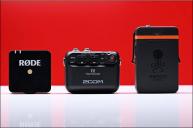
 sa16202.jpg677 x 448 - 30K
sa16202.jpg677 x 448 - 30K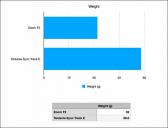
 sa16201.jpg682 x 520 - 28K
sa16201.jpg682 x 520 - 28K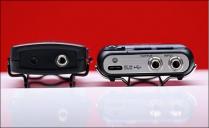
 sa16203.jpg680 x 417 - 30K
sa16203.jpg680 x 417 - 30K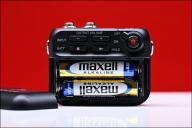
 sa16204.jpg668 x 445 - 39K
sa16204.jpg668 x 445 - 39K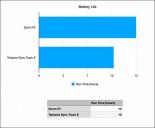
 sa16205.jpg648 x 535 - 27K
sa16205.jpg648 x 535 - 27K -
Still on backorder, ordered this almost a month and half ago
-
has anyone already mentioned that the F2 has only 2.5V phantom power. That means you cannot use better quality mics like the dpa 4060/6060 or Sanken COS-11. The Track E has 5V btw..
-
(c) It is Zoom, always fucks up stuff for small recorders.
Making sure that DPA or Sanken mikes work is 100% necessity.
-
Hi guys, I am looking to use multiple recorders like the zoom F2-BT or tentacle track E. I plan to use it on an up coming shoot with 3 cameras. I also want to do a timecode sync with the three cameras and recorders and possibly a sound recorder. I am looking for the cheapest option/combination to get this done. Please give your input as to my best path. Thanks in advance.
-
I also want to do a timecode sync with the three cameras and recorders
This point is questionable - timecode is usable if you have lot of different footage. For normal one time usage you are better just buying loud beeper and use NLE for all else :-)
But I think you can set timecode among all Zoom F2-BT recorders to make life simpler.
-
@Vitaliy_Kiselev, Most of this will be outdoors and at times cameras will be far apart. Will do multiple starts and stops on the cameras. Shoot is documentary and there're sections that will be "live".
I know zoom F2-BT allows for timecode with app but it has to work with a combination of Atomos products. I am looking for the cheapest way to get it done.
Howdy, Stranger!
It looks like you're new here. If you want to get involved, click one of these buttons!
Categories
- Topics List23,979
- Blog5,725
- General and News1,352
- Hacks and Patches1,153
- ↳ Top Settings33
- ↳ Beginners255
- ↳ Archives402
- ↳ Hacks News and Development56
- Cameras2,362
- ↳ Panasonic991
- ↳ Canon118
- ↳ Sony156
- ↳ Nikon96
- ↳ Pentax and Samsung70
- ↳ Olympus and Fujifilm100
- ↳ Compacts and Camcorders300
- ↳ Smartphones for video97
- ↳ Pro Video Cameras191
- ↳ BlackMagic and other raw cameras116
- Skill1,961
- ↳ Business and distribution66
- ↳ Preparation, scripts and legal38
- ↳ Art149
- ↳ Import, Convert, Exporting291
- ↳ Editors191
- ↳ Effects and stunts115
- ↳ Color grading197
- ↳ Sound and Music280
- ↳ Lighting96
- ↳ Software and storage tips267
- Gear5,414
- ↳ Filters, Adapters, Matte boxes344
- ↳ Lenses1,579
- ↳ Follow focus and gears93
- ↳ Sound498
- ↳ Lighting gear314
- ↳ Camera movement230
- ↳ Gimbals and copters302
- ↳ Rigs and related stuff272
- ↳ Power solutions83
- ↳ Monitors and viewfinders339
- ↳ Tripods and fluid heads139
- ↳ Storage286
- ↳ Computers and studio gear560
- ↳ VR and 3D248
- Showcase1,859
- Marketplace2,834
- Offtopic1,319
















